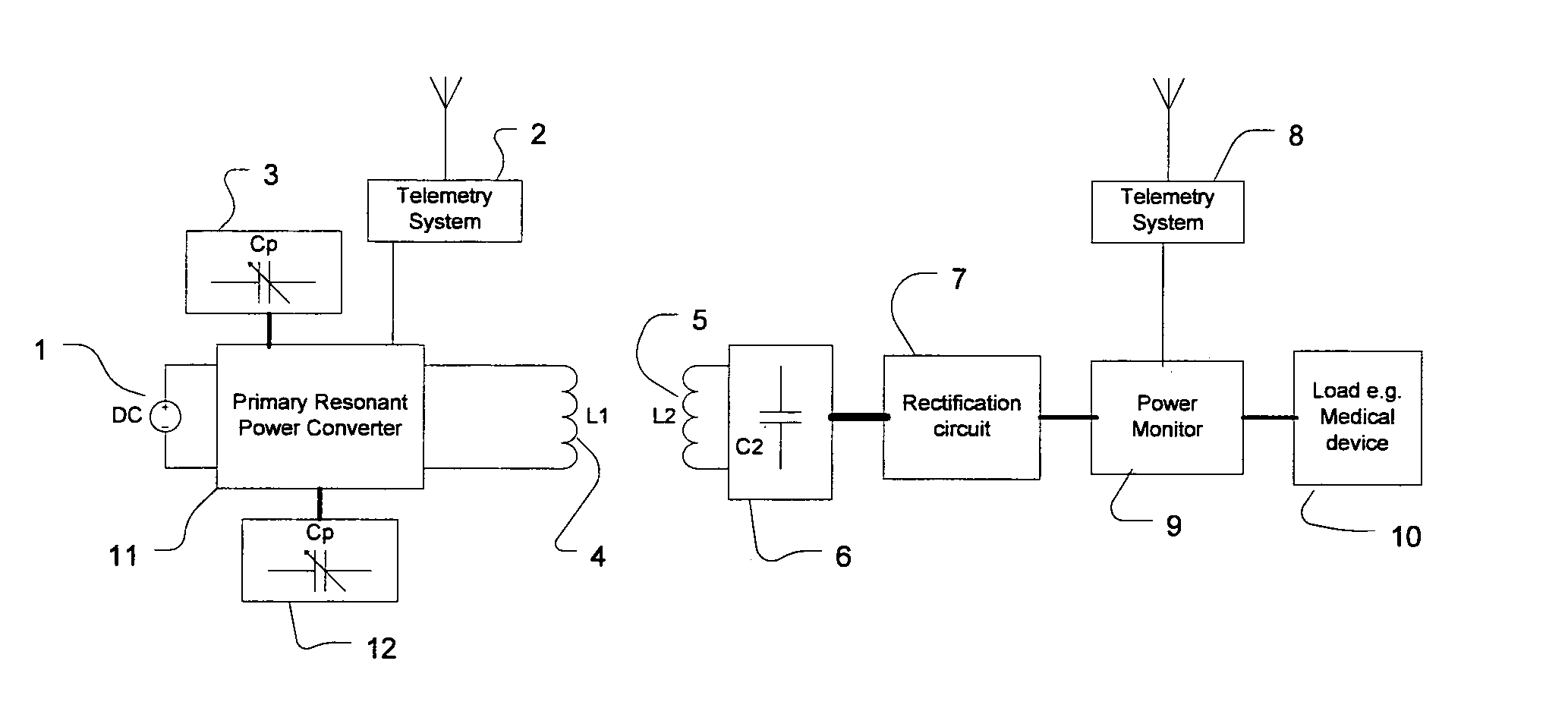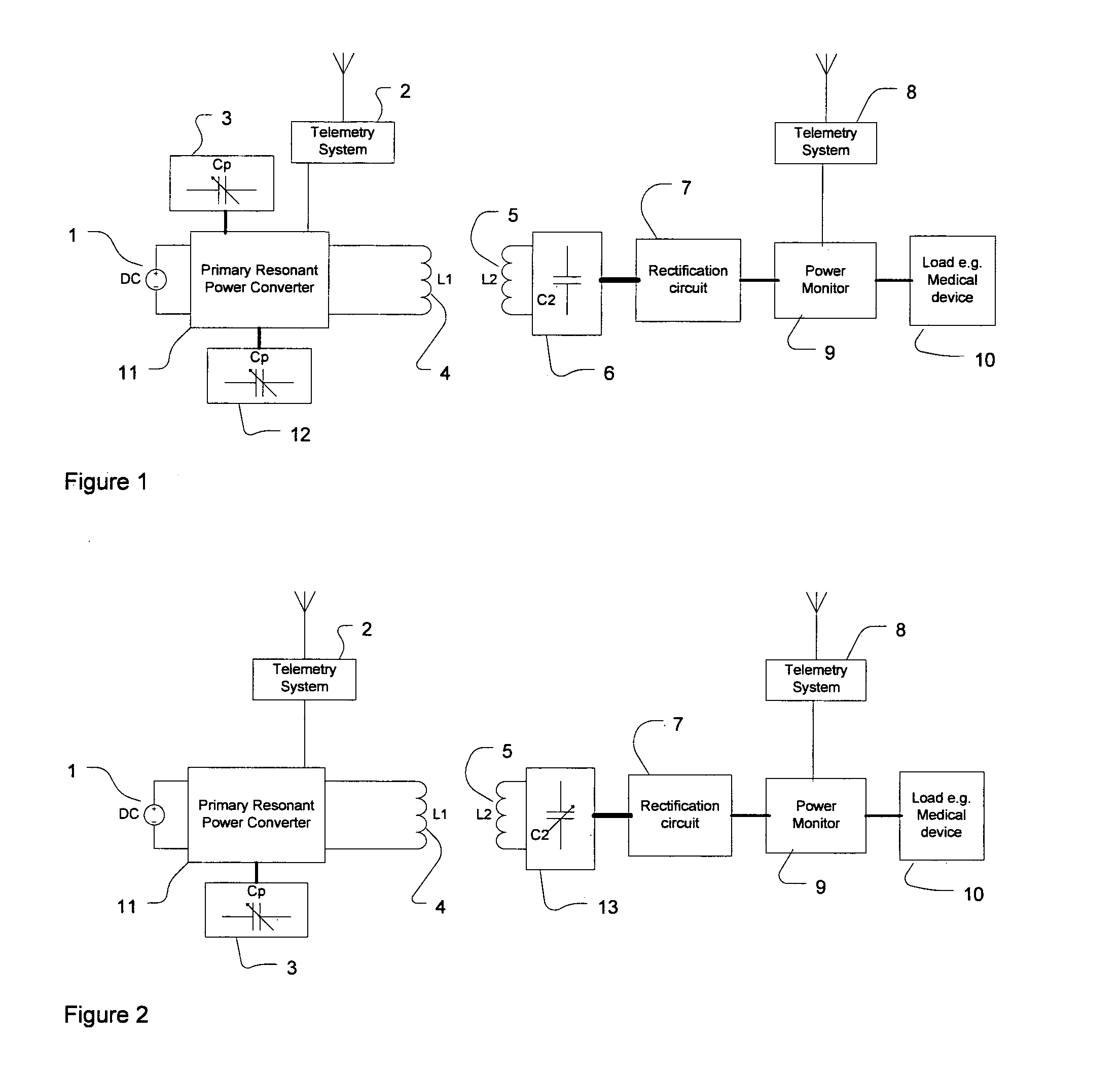Selectable resonant frequency transcutaneous energy transfer system
a transcutaneous energy transfer and resonant frequency technology, applied in the field of inductive power transfer, can solve the problems of reducing the power delivered to the implanted device, reducing the magnitude of the frequency change that can be achieved, and causing power loss, so as to achieve the effect of lowering the power loss
- Summary
- Abstract
- Description
- Claims
- Application Information
AI Technical Summary
Benefits of technology
Problems solved by technology
Method used
Image
Examples
Embodiment Construction
[0043]Referring to the drawings, like reference numerals are used to designate like components throughout the drawing figures. FIG. 1 shows one embodiment of an inductive power transfer (IPT) system in the form of a transcutaneous energy transfer (TED system for providing power from a primary circuit to a secondary, or pick-up, circuit which is closely associated with, and powers, an implanted device. As disclosed in NZ 535012 and NZ 526115, the primary circuit includes a resonant circuit consisting of a tuned conductor capable of providing a required electromagnetic field, such as coil 4. The secondary, or pick-up circuit includes secondary, or a pick-up, coil 5 which is tuned to provide a resonant pick-up circuit. The implanted device is represented by the load 10, and it may be a heart pump and / or battery charging circuit for example, or any other device that consumes electrical power. The implanted device may incorporate other parts of the TET system (5, 6, 7, 8, 9) into the sam...
PUM
| Property | Measurement | Unit |
|---|---|---|
| power | aaaaa | aaaaa |
| electromagnetic field | aaaaa | aaaaa |
| resonant frequency | aaaaa | aaaaa |
Abstract
Description
Claims
Application Information
 Login to View More
Login to View More - R&D
- Intellectual Property
- Life Sciences
- Materials
- Tech Scout
- Unparalleled Data Quality
- Higher Quality Content
- 60% Fewer Hallucinations
Browse by: Latest US Patents, China's latest patents, Technical Efficacy Thesaurus, Application Domain, Technology Topic, Popular Technical Reports.
© 2025 PatSnap. All rights reserved.Legal|Privacy policy|Modern Slavery Act Transparency Statement|Sitemap|About US| Contact US: help@patsnap.com



